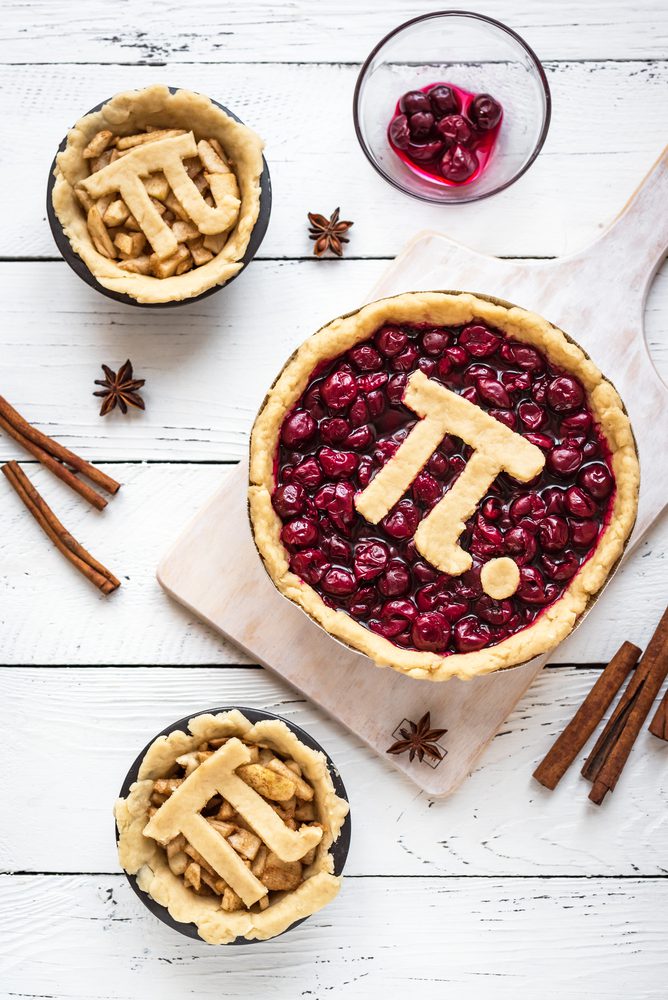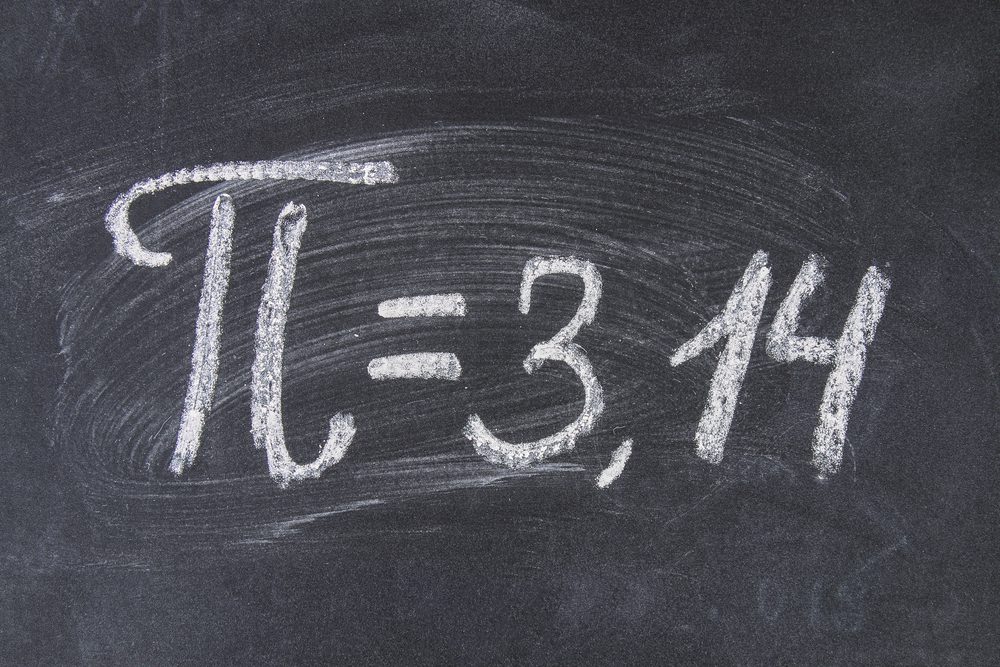Spis treści:
- 1 When is the celebration of the PI Day?
- 2 How can we celebrate the PI Day?
- 3 PI number – a real non-quantifiable constant
- 4 How to calculate PI?
- 5 The number PI – Guinness World Record for the number of decimal places memorised
- 6 PI number in Popculture
- 7 The number PI – mysterious and rich in information
Although there are infinitely many infinitesimal numbers in the set of real numbers (which is worth emphasising – incomparably more infinitesimal than there are infinitely many integers in the same set of real numbers), it is PI that is the special number. It is a value without which mathematics, physics and other sciences and technology based on them could not do without. The number PI is probably the most popular mathematical constant – so much so, that the calendar has a holiday devoted to it – PI Day.
When is the celebration of the PI Day?
The PI holiday is celebrated on the same date every year, which is the 14th day of March. The choice of this date is not accidental and it refers to the first three digits of the number PI, i.e. “3,14” – the digit “3” because March is the third month in order according to the Gregorian calendar scheme, in which a year has 12 months formed by 365 days (366 days every four years in a leap year – the nearest leap year will be 2022), and after the comma “14” – because the PI number holiday is celebrated on the 14th of the month.
Interestingly, this day has another symbolic meaning – the 14th of March is also the birthday of Albert Einstein – the famous scientist who was an eminent specialist in theoretical physics, with a particular emphasis on quantum mechanics and field theory.
How can we celebrate the PI Day?
Although the number PI has been known to mankind since Ancient Greece, the initiative to celebrate the number PI first saw the light of day in 1988 at the Exploratorium science museum in San Francisco, USA. The event received overwhelming support from the US House of Representatives. The initiator of the PI celebration was an American physicist named Lawrence N. Shaw.
On 14.03.1988 he celebrated this holiday with his co-workers by walking with them in a circle-like procession, and at 13:59 GMT-8, according to the record 1:59 PM he proceeded to consume fruit pies in the shape of a circle. Why pies actually? Because of an innocent play on words – the number PI is pronounced the same as pie. All over the world, it is one of the ways of spending the PI Day celebrations, which also include competitions, games, and lectures on issues and secrets of mathematics, physics and other technical sciences where we can see the presence of the number PI.
PI number – a real non-quantifiable constant
PI is an infinite number and its value does not change. The fact that in engineering calculations the same calculation incorporating the number PI may give slightly different results is due to the fact that electronic calculating machines accept for calculation different approximations of the number PI, depending on their machine epsilon, resulting from the hardware and software limitations of the calculation algorithm.
The inequality of the number PI was proved in 1767 by the Swiss scientist Johann Heinrich Lambert. This property of the number PI means that it cannot be written in the standard way using fractional notation, but only its more or less exact approximation.
How to calculate PI?
The first approximation of the number PI was calculated by Archimedes of Syracuse (278-212 BC). Archimedes’ approximation was based on encircling the circumference of a circle using polygons, the so-called circle squaring method. The closest approximations that Archimedes obtained for the number PI were between 3.1408 and 3.1428.
The number PI is the quotient – the ratio of the length of the circumference of a circle (in the particular case of an ellipse, where the minor and major axes have the same length) to the diameter (twice the radius) of the same circle. Therefore, also when we want to calculate the area of a circle (a filled circle), we use the formula (1.1), and after differentiating by the radius we obtain the formula for the circumference of a circle (1.2):
S = πr2
(1.1)
where:
S – area of the circle [m2];
r – radius of the circle [m];
L = dS / dr = d(πr2) / dr = πdr2 / dr = 2πr
(1.2)
where:
L – length of the circumference of the circle [m];
S – area of the circle [m2];
r – radius of the circle [m].
The number PI – Guinness World Record for the number of decimal places memorised
The Guinness Book of Records also holds the record for the most accurate recitation of the decimal places of the number PI. The current first place record holder in this unusual discipline, is Rajveer Meena who hails from Vellore, India. Rajveer Meena set the record on 21 March 2015 by reciting the number PI from memory to 70,000 decimal places, which took him nearly ten clock hours!

PI number in Popculture
The number PI is not only part of the great mathematical landscape. The phenomenon of the number PI has also made it an important element of popular culture. One does not have to look far to find examples in cinematography – in 1998, the American psychological thriller “π”, directed by Darren Aronofsky, was released. In 1998, an American psychological thriller “π”, directed by Darren Aronofsky, was released. The Polish premiere took place a little later, in 2000. The leading role is played by Sean Gullette, playing Maximillian Cohen – a mathematician who conducts intensive research on the number PI and its correlation with the mechanisms of the world. His person and research work become a particular object of interest for stockbrokers.
The number PI – mysterious and rich in information
The number PI is undoubtedly a very interesting phenomenon. Its multitude of applications on a practical and theoretical level has a powerful impact on how we live our lives. In addition to this, its contribution to popular culture can also benefit the other way round, as it can become a catalyst for helping many people to overcome the difficulties associated with understanding mathematics, and even encourage a deeper understanding of the “queen of sciences” and what mathematics has built…using the number PI, but not only!
How useful was this post?
Click on a star to rate it!
Average rating 0 / 5. Vote count: 0
No votes so far! Be the first to rate this post.





